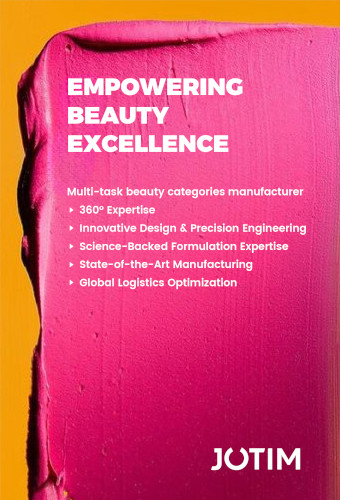With 23 international pavilions this year and a 32% increase in the number of exhibitors over the previous edition - 1,096 exhibitors from 52 countries participating this year as compared with 829 in 2012 - Beautyworld Middle East’s continued expansion underlines the vast potential of the regional market for beauty products.
Strong regional growth
According to Euromonitor International, the per capita spend on personal care in the United Arab Emirates is set to reach 1,170 dirahms (AED) this year and grow to 1282 dirahms (268.4 euros or 348.9 dollars) by 2017, 13% increase compared to 2012. However, this average hides strong disparities, in particular a very high level of consumption for the 10% richest.
Regarding Saudi Arabia, Euromonitor International forecasts that strong economic growth and a further increase in disposable income levels will boost sales in beauty and personal care by 5.8% by 2017.

“The attractiveness of the region also lies in the different emerging countries that surround it, including Iran for perfumes, Pakistan for skincare,” says Philippe Durieux, area sales manager at Gerresheimer.
Niche perfume brands
The most advanced markets, in particular the United Arab Emirates, also benefit from the growing interest in specialised products and premium brands driven. “With a multitude of brands already in the market, customers are very choosy about what they use. Niche brands are doing well, with the market growing to accommodate more of them and customers taking an increased liking to what’s different,” explains Mohammed Abdul Rahim Al Fahim, CEO of Paris Gallery Group of Companies.
This is especially true for fragrances, with a market expected to reach US$ 33.4 million in 2016, in the United Arab Emirates alone.
It is therefore quite logical that Epoc Messe Frankfurt, the organiser of Beautyworld Middle East partnered with Elements Showcase, the New York event specialised in niche and high end fragrances and cosmetics, to enable a series of emerging brands to showcase their products in Dubai.

“Dubai is the perfect intersection of buyers and media from Europe, Asia, and, of course, the Middle East,” says Frederick Bouchardy, Elements co-founder.
Among the participating brands: Cire Trudon, Illuminum, Bond No. 9, Yosh, Atelier Flou, Mona di Orio, État Libre d’Orange, Rouge Bunny Rouge, etc.
Fragrance heritage
The rise of niche fragrance brands in the Middle East is the consistent continuation of the traditional importance of scented products in the region.
According to Euromonitor International, the per capita spend on fragrances in the United Arab Emirates is expected to reach AED 128 (USD 34.90) in 2017. This is 90% more than that of the US, which is only expected to reach USD 18.40 in 2017. This expected to market be worth approximately AED 1.13 billion (236.5 million euros or 307 million dollars), in the UAE alone.
"It is a key market, with a strong local manufacturing and from time to time a quest for excellence that can result in peak prices," confirms François-Patrick Sabater, CEO of Technicoflor, a French supplier of perfumery ingredients and compositions.
No surprise in such conditions that perfumery is the main sector at Beautyworld Middle East and that it continues growing.
“Many customers create their own compositions,” says Viginie Gervason, Marketing Manager Ingredients at Firmenich. “There are of course a lot of demands that are specific to this market: oud, wood or rose notes.”
Of course, the local market is not limited to perfumery. Many exhibitors from the makeup sector have noted the growing demand in the region, in particular in Iran. “There also a clear trend towards the creation of makeup private label brands by retailers,” observes My Driss Drissi, B. Kolormakeup & Skincare.



































